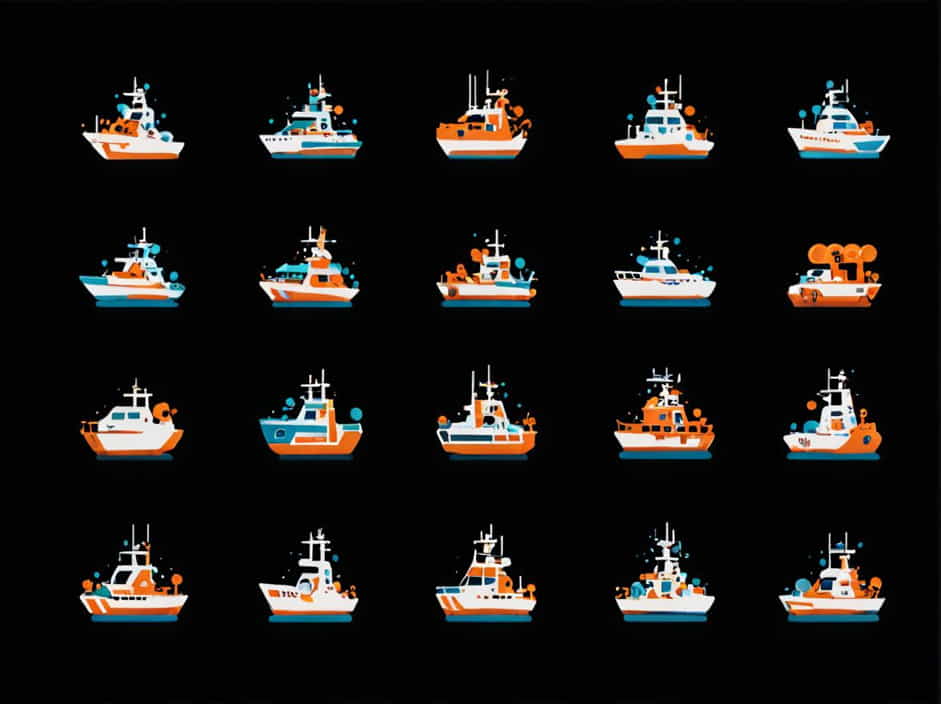Watercraft engineering is a fascinating field that combines fluid dynamics, structural mechanics, and advanced materials to design and improve boats, ships, and other maritime vessels. One of the most innovative watercraft designs is the trimaran, a three-hulled vessel known for its stability, speed, and fuel efficiency.
In a mechanics laboratory, engineers and researchers study the hydrodynamics, aerodynamics, and material strength of trimarans and other watercraft to enhance performance and safety. This topic explores the fundamental principles, advantages, and applications of trimarans, along with the role of mechanical testing in watercraft engineering.
Understanding Watercraft Mechanics
What Are Watercraft?
Watercraft include all types of vessels that operate on water, ranging from small boats and yachts to large ships and submarines. These vessels rely on buoyancy, propulsion, and structural integrity to navigate efficiently.
Basic Principles of Watercraft Mechanics
- Buoyancy – The ability of a vessel to float, based on Archimedes’ principle.
- Hydrodynamics – The study of water flow around the hull, affecting drag and speed.
- Structural Strength – The ability of materials to withstand waves, wind, and cargo weight.
- Stability – Resistance to capsizing, which is crucial for safety.
A mechanics laboratory uses experimental models and simulations to test these principles, ensuring that watercraft perform optimally under different conditions.
What Is a Trimaran?
Definition and Structure
A trimaran is a multi-hulled vessel consisting of:
- Main Hull (Central Hull) – The primary structure that houses the engine and main compartments.
- Two Side Hulls (Outriggers or Floats) – Smaller hulls attached to the main hull by crossbeams, providing extra stability.
Trimarans are popular in military, commercial, and recreational applications due to their unique design and hydrodynamic efficiency.
History of Trimarans
- The trimaran concept dates back to ancient Polynesian outrigger canoes, which used extra hulls for stability during long ocean voyages.
- Modern trimarans have evolved with advanced composite materials, high-performance hydrodynamics, and cutting-edge propulsion systems.
Advantages of Trimarans Over Traditional Watercraft
1. Increased Stability
Trimarans have a wider beam (width) compared to monohulls, reducing the risk of capsizing. This makes them ideal for rough waters and high-speed applications.
2. Higher Speed Potential
The streamlined design of a trimaran reduces wave resistance, allowing it to achieve higher speeds with less power consumption.
3. Improved Fuel Efficiency
Trimarans require less energy to maintain speed, leading to lower fuel consumption and eco-friendly maritime travel.
4. Larger Deck Space
The wider structure provides more usable deck space, making trimarans ideal for military vessels, ferries, and luxury yachts.
5. Reduced Wave Impact
The side hulls minimize wave impact on the central hull, ensuring a smoother ride in rough seas.
Trimaran Applications in Modern Engineering
1. Naval and Military Use
The US Navy and other military organizations use trimarans for their:
- High-speed patrol vessels
- Stealth warships
- Unmanned autonomous watercraft
Example: The USS Independence (LCS-2) is a trimaran used for coastal defense and reconnaissance missions.
2. Commercial and Passenger Transport
Many high-speed ferries and transport ships use trimaran designs for fuel efficiency and smooth passenger experience.
Example: The Austal-built trimaran ferries operate in Australia and Asia, offering faster travel times.
3. Recreational Yachts and Racing
Trimaran yachts are popular among sailing enthusiasts and racing teams due to their lightweight materials and hydrodynamic efficiency.
Example: The Hydroptere set a world speed record for sail-powered vessels using a trimaran structure.
4. Renewable Energy and Research Vessels
Trimarans are used as oceanographic research vessels and for wave energy collection due to their stability and low energy consumption.
Mechanics Laboratory Testing for Trimarans and Watercraft
1. Hydrodynamic Testing
Hydrodynamic testing measures how water flows around a trimaran’s hull. Techniques include:
- Towing Tank Tests – Scaled models are tested in a large water basin to analyze drag and wave resistance.
- Computational Fluid Dynamics (CFD) – Simulations predict water flow patterns, resistance, and efficiency.
2. Structural Strength Analysis
Watercraft experience constant stress from waves, wind, and cargo loads. Laboratories perform:
- Finite Element Analysis (FEA) – Predicts how materials will react under pressure.
- Impact and Fatigue Testing – Ensures hulls can withstand repeated wave impacts.
3. Propulsion and Power System Optimization
Mechanical engineers test:
- Propeller efficiency – To minimize energy loss.
- Hybrid and electric propulsion – To develop sustainable trimaran technology.
4. Stability and Safety Tests
Trimarans must be self-righting after tilting. Tests include:
- Capsize Resistance Tests – Evaluating response to extreme waves.
- Ballast and Weight Distribution Analysis – Ensuring even load distribution.
Future Trends in Trimaran and Watercraft Engineering
1. Use of Advanced Composite Materials
Lightweight materials like carbon fiber and Kevlar reduce weight while increasing strength, making trimarans even more efficient.
2. Autonomous and Unmanned Vessels
AI-powered trimarans are being developed for marine research, defense, and cargo transport.
Example: The Sea Hunter is an autonomous trimaran used by the US Navy for long-range surveillance.
3. Green and Sustainable Maritime Technology
Future trimarans will incorporate:
- Solar and wind-assisted propulsion.
- Hydrogen fuel cells for zero-emission travel.
- Self-sustaining ocean research labs.
4. High-Speed Ferry Innovations
As demand for fast and efficient transport grows, trimaran ferries will feature:
- Hydrofoil-assisted designs to further reduce drag.
- Noise and vibration reduction for a smoother passenger experience.
Trimarans represent a revolutionary leap in watercraft engineering, combining stability, speed, and fuel efficiency. Whether in military applications, commercial transport, or renewable energy research, trimarans continue to shape the future of maritime technology.
Mechanical laboratories play a critical role in optimizing trimaran performance through hydrodynamic testing, structural analysis, and propulsion efficiency studies. With ongoing innovations in materials, automation, and sustainable energy, trimarans will remain at the forefront of watercraft engineering.
